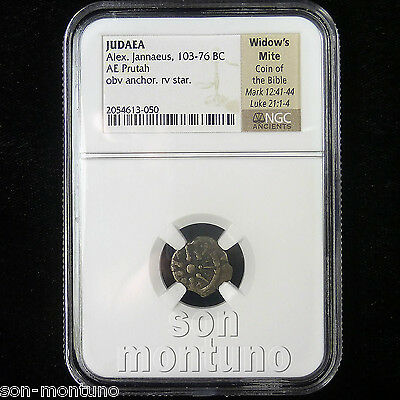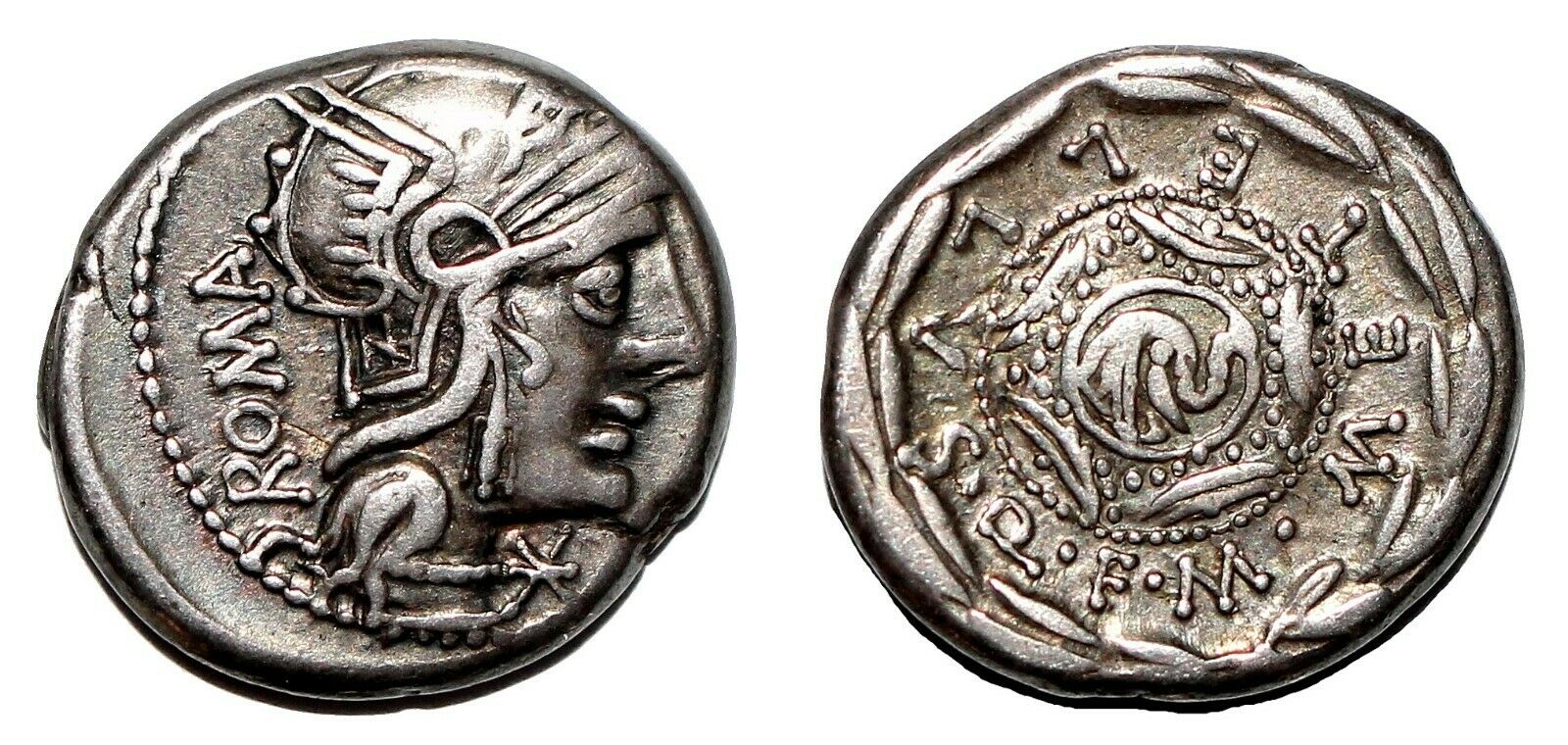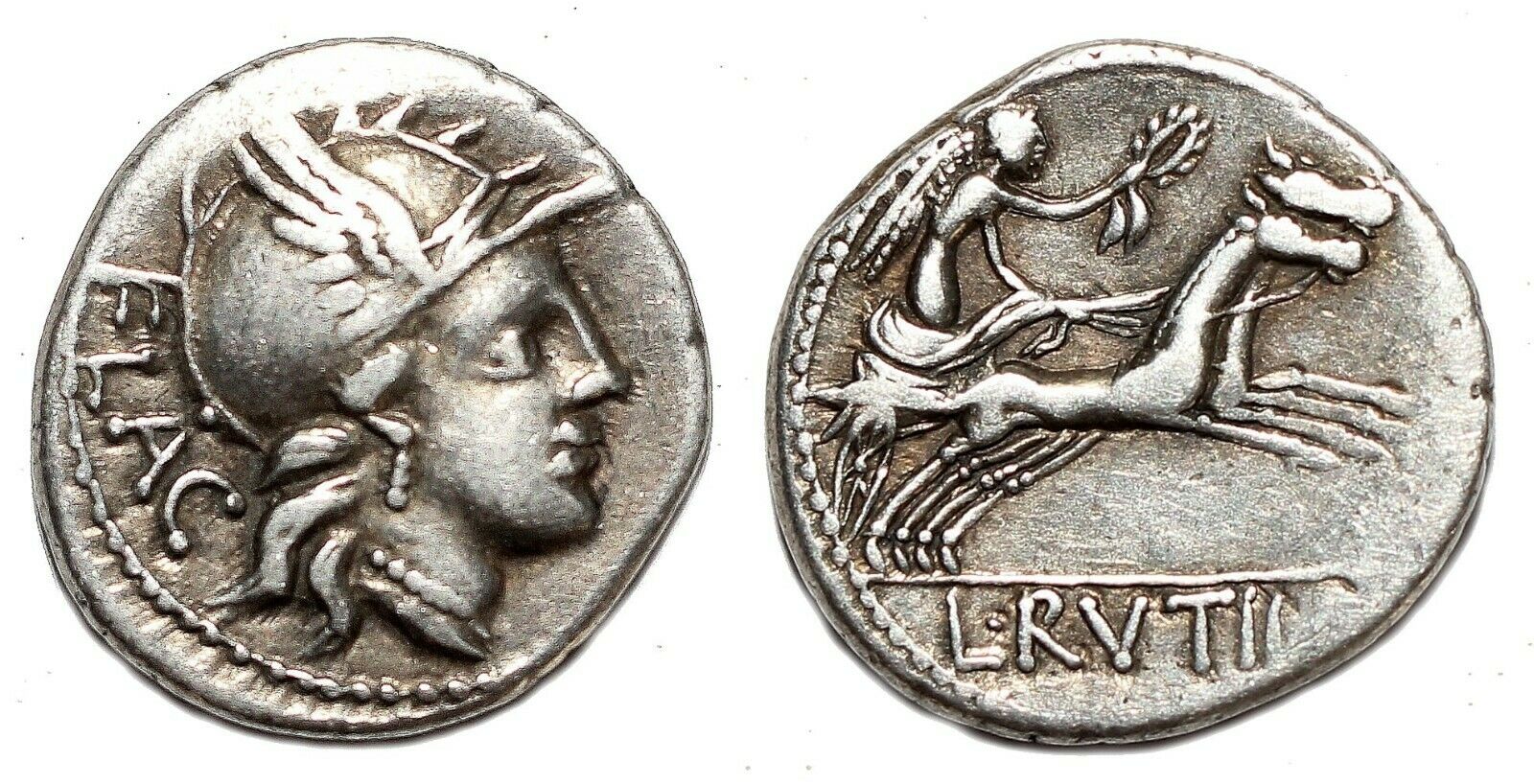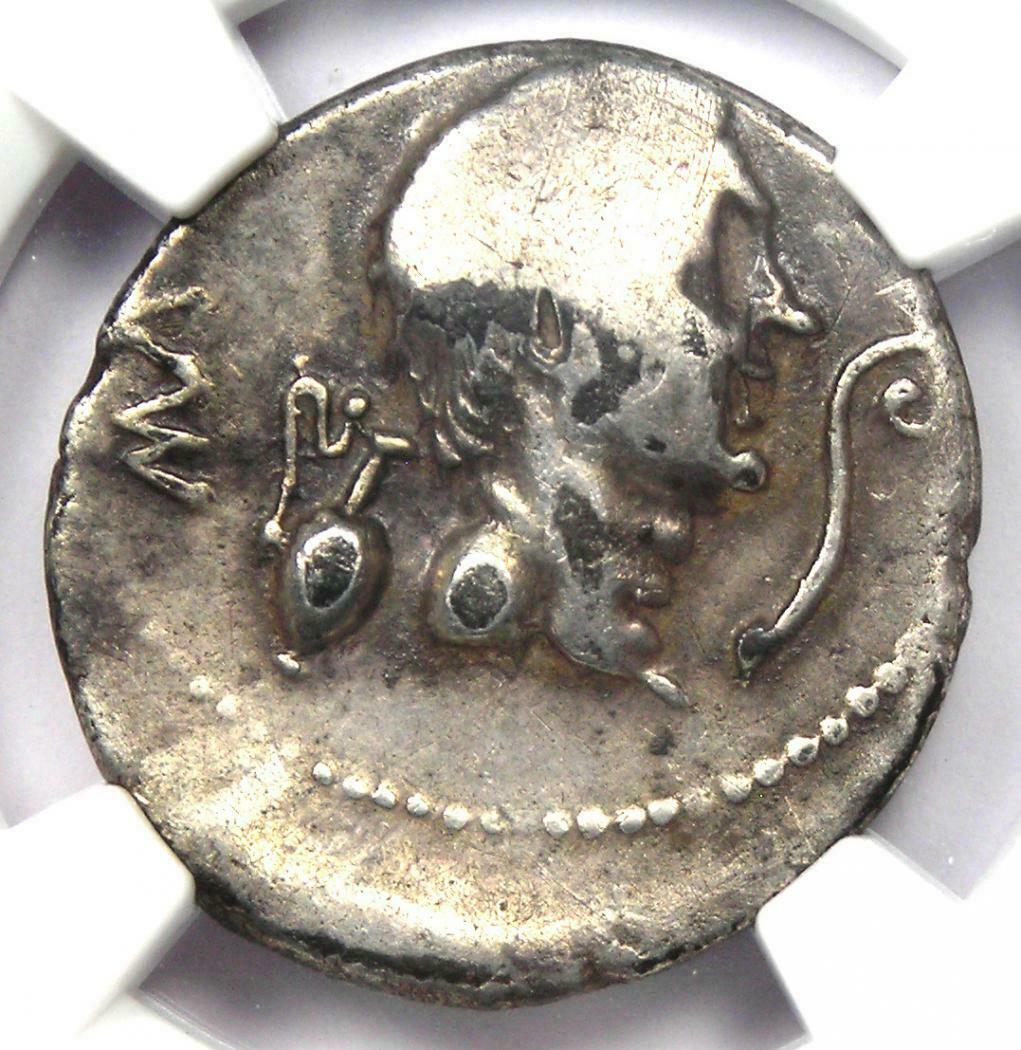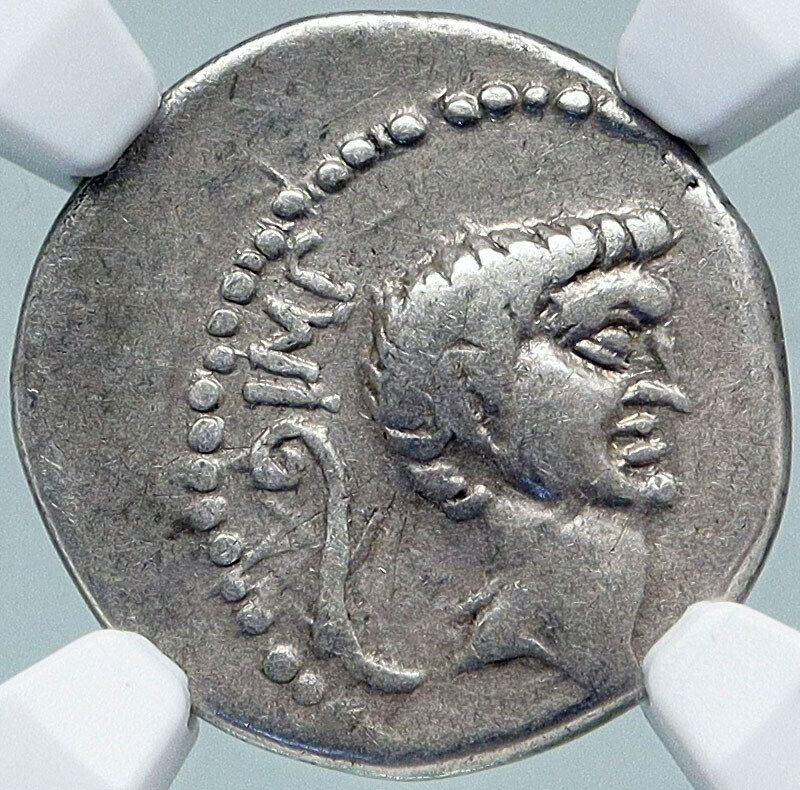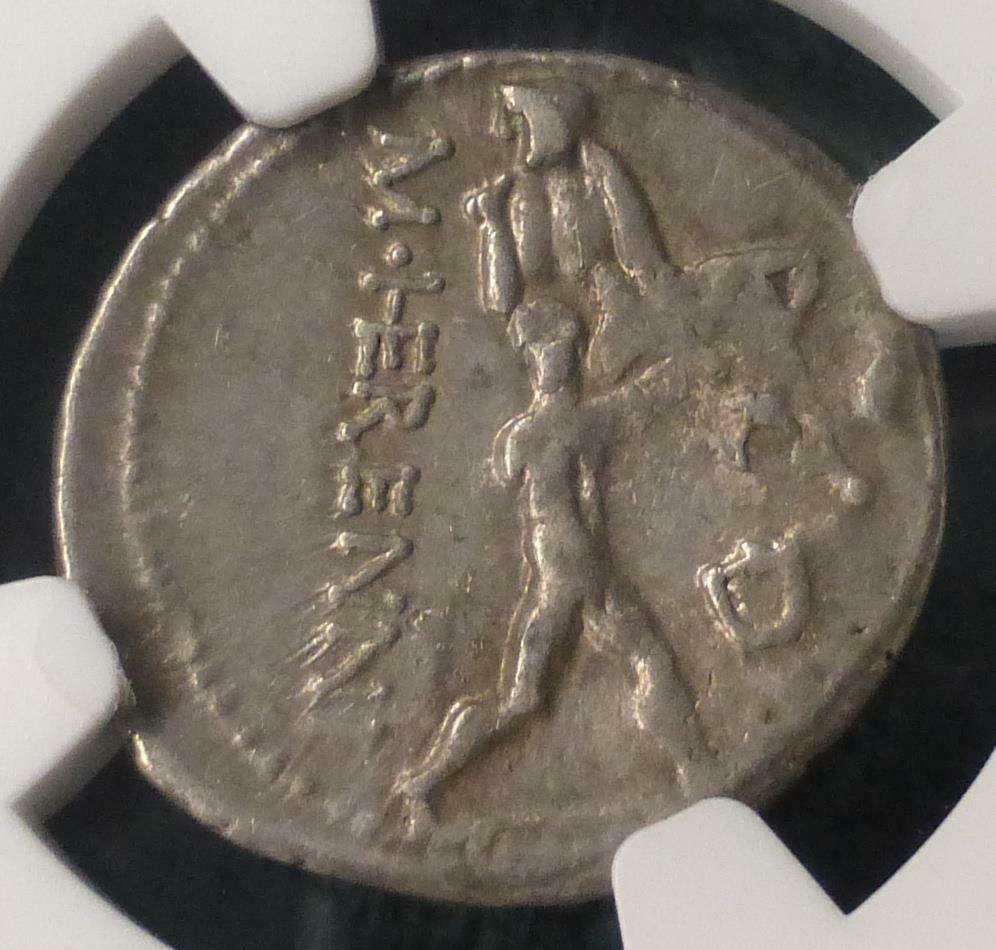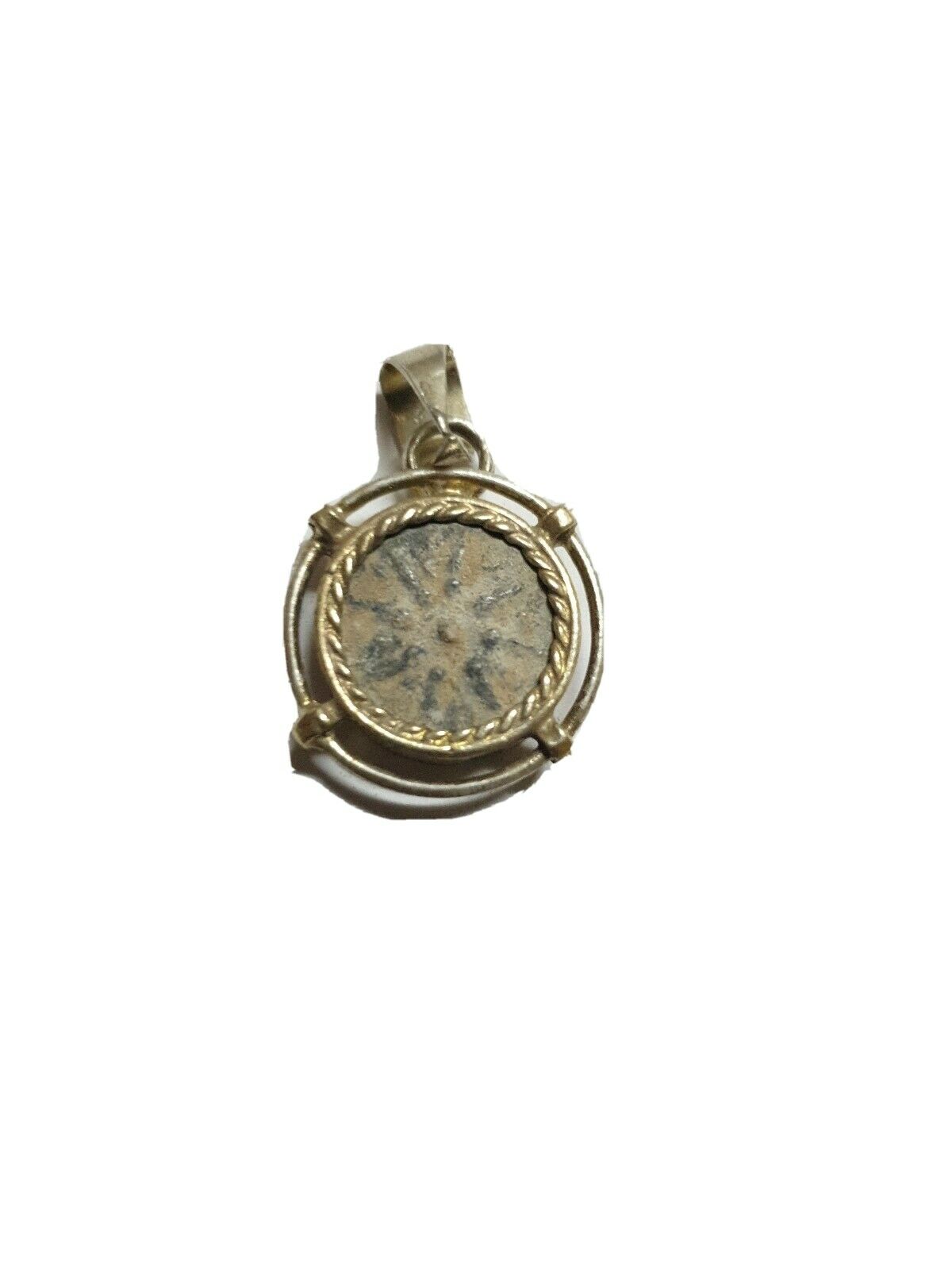-40%
Mark Antony (32-31 BC) Roman AR legionary LEG VI denarius coin Crawford 544/19
$ 113.52
- Description
- Size Guide
Description
Roman RepublicanMarcus Antoninus (32-31 BC)
Denomination
: silver AR denarius
Weight:
3.60 grams
Diameter
: 18 mm
Die Axis
: 8 h
Struck
: Autumn 32 - Spring 31 BC
Mint
: Military mint travelling with Antony, possibly at Patrae, Greece
Obverse
:
Praetorian galley sailing to right, ANT AVG above, III VIR R P C below
Reverse
:
Legionary eagle (aquila) between two standards (signa), LEG - VI across lower field
References
: Roman Republican Coinage (Crawford) 544/19; RBW Collection of Roman Republican Coins (RBW) 1841; History & Coinage of the Roman Imperators (Sear) 356
Grade / Comments
: Very Fine, old cabinet toning
From Sear's
Imperators
reference...
"The last major coinage issued by the Triumvir Marcus Antoninus, prior to his downfall at Actium on 2 September 31 BC, was the celebrated 'legionary' series. The volume of this coinage was truly prodigious and specimens are occasionally found in hoards of the Severan period, some two and a half centuries after the pieces originally entered circulation. This was because the 'legionary' denarii had early acquired a reputation (partially deserved) for having been struck in debased metal and for that reason had not disappeared from circulation during the latter part of Nero's reign (after AD 64) when that emperor reduced the weight, but probably not the fineness, of the denomination. Soon afterwards Vespasian (AD 69-79) even countermarked some specimens of the Antonian denarii in order to maintain their legality in circulation. When Trajan (in AD 107) decided to demonetize the precious metal coinage issued prior to Nero's currency reform of AD 64 he produced a fascinating series of 'restoration' coins, bearing the emperor's name, reviving some of the principal denarius types of the republican period together with a number of aurei honouring some of his imperial predecessors. Significantly, the denarii did not include a restoration of Antony's 'legionary' type for the very good reason that these coins still remained in circulation in appreciable numbers. More than half a century later, during the joint reign of Marcus Aurelius and Lucius Verus (AD 161-169), a restoration of the type honouring
legio V
I was produced, though the motivation behind this very specific revival remains obscure.
Antony knew that his army and navy would both have vital roles to play if he was to prevail over Octavian in the struggle for mastery of the Roman world. Accordingly, the two main branches of the armed forces receive equal attention on the coinage which was produced specifically for military pay during the long months of preparation prior to the final conflict... Now the type was to become familiar to all on Antony's massive pre-Actium coinage and the deep impression which it made on the Roman consciousness at this time was doubtless responsible for the frequency of its occurrence on the coins of the emperors.
Twenty-three legions are honoured, three of them with additional types giving their names as well as their numbers (
XII Antiqua, XVII Classica
, and
XVIII Lybica
), Many of these units would have been raised by Antony in the East as his supply of Italian recruits had been virtually cut off by Octavian. Under the terms of their triumviral agreements both leaders were supposed to have equal access to Italian enlistees but because of the distrust which existed between them Octavian, who had full control of the fatherland, never allowed his eastern colleague to exercise his rights in this regard. Following the surrender of the Antonian army at Actium many of the legions were disbanded. Others were incorporated into Octavian's army, hence the name Gemina ('Twin') which was applied to several of the legions at this time. On the Antonian 'legionary' coinage the praetorian cohorts and the cohort of
speculatores
also receive mention. Although silver denarii formed the bulk of the issues gold aurei have been recorded for the
cohortes praetoriae
and for
legiones II, IV, VI, XII, XIII, XIV
, and
XIX
. The style and fabric of the coins is uniform throughout suggesting that the entire series was issued from a single centrally-located mint. As production probably did not commence before the latter part of 32 BC, by which time Antony was already in Greece, it seems logical to seek a mint in this region rather than further afield... A likely choice would be Antony's headquarters at Patrae, near the mouth of the Gulf of Corinth, where he was to spend the winter of 32/31 BC making final plans for the deployment of troops and naval forces."
Coins are guaranteed genuine for life.
Returns may be made within 14 days for any reason as long as items are unaltered. Buyer to bear cost and risk of return postage.


